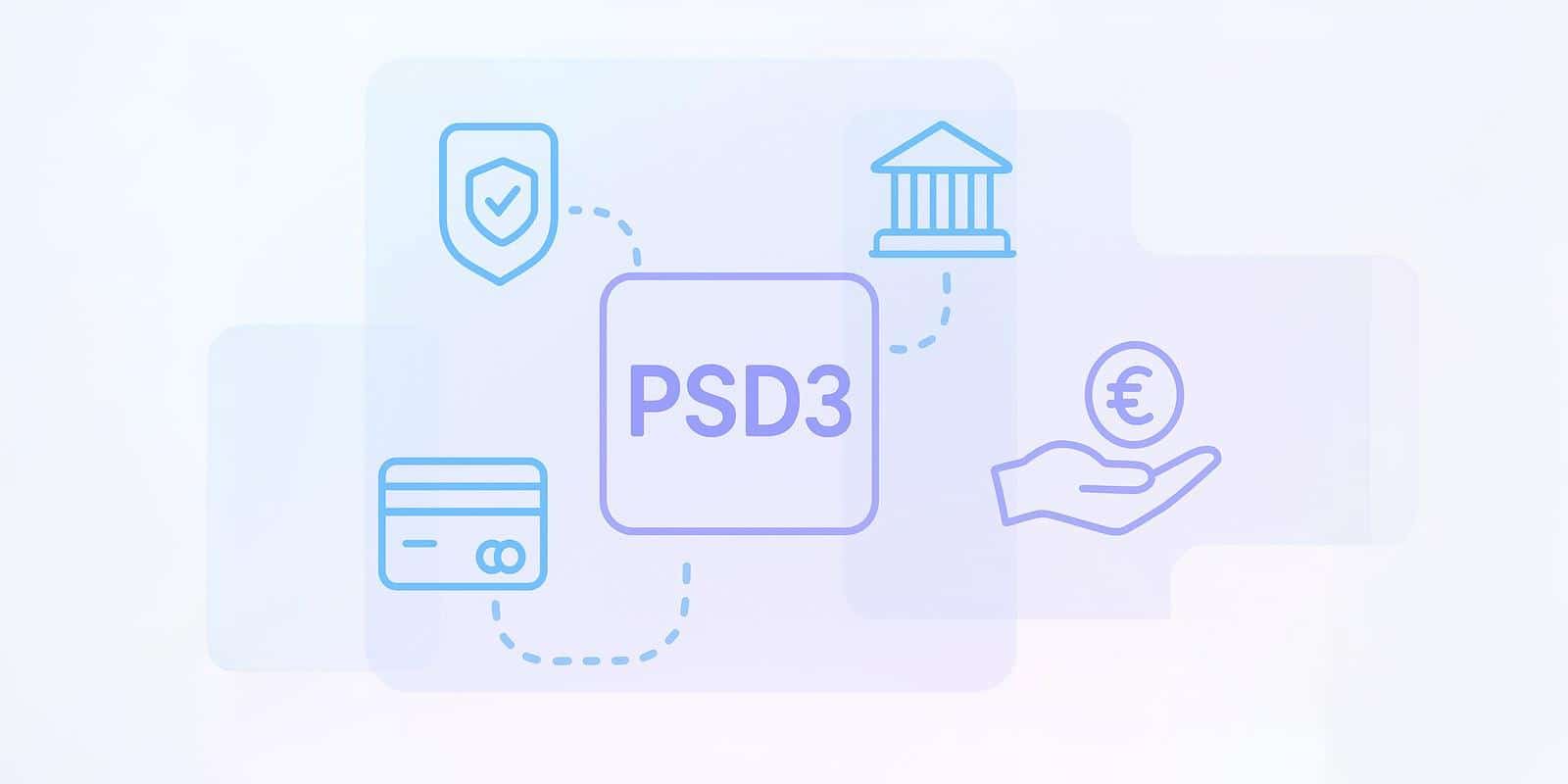Juridisch en Compliance
Wat is de Payment Services Directive 3 (PSD3)?

Wat is de Payment Services Directive 3 (PSD3)?
PSD3, ofwel Payment Services Directive 3, is de nieuwste Europese regelgeving voor betaaldiensten. Het is een update van PSD2 en kan gevolgen hebben voor de veiligheid, concurrentie en transparantie in de financiële sector.
Het biedt ook betaal- en elektronischgeldinstellingen toegang tot betaalsystemen en heeft invloed op fraudebeschermingsmaatregelen zoals Strong Customer Authentication (SCA).
Wat zijn de belangrijkste doelstellingen van PSD3/PSR?
De belangrijkste doelen van PSD3 en de bijbehorende Payment Services Regulation (PSR) zijn:
- Online betaalbeveiliging heeft betrekking op het niveau van beschikbare bescherming tegen consumentenfraude.
- Ga in op aspecten met betrekking tot consumentenrechten en -bescherming.
- Bespreek de verschillen tussen banken en niet-bancaire betaalproviders.
- Optimaliseer de prestaties van open banking.
- De implementatie van meer gedetailleerde vereisten voor Strong Customer Authentication (SCA) wordt overwogen.
Wat is het verschil tussen PSD3 en PSD2?
PSD3 is een herziening van PSD2, met aanpassingen met betrekking tot beveiliging, concurrentie en innovatie.
Belangrijkste verschillen zijn onder meer:
- Fraudepreventie is gerelateerd aan het delen van fraudegerelateerde gegevens tussen payment service providers (PSP's).
- De rechten van consumenten op terugbetaling in verband met fraude omvatten nu een breder scala.
- Vereenvoudigde open banking integratie correleert met meer controle van de klant over data.
- Nieuwe nalevingsvereisten voor bedrijven met betrekking tot dataverwerking, authenticatie en beveiliging.
Wat zijn de belangrijkste veranderingen die in PSD3 zijn geïntroduceerd?
PSD3 introduceert veranderingen op vier belangrijke gebieden.
- Beveiliging: Het heeft gevolgen voor de regels voor sterke klantenauthenticatie (SCA), die betrekking hebben op fraudebestrijding.
- Consumentenbescherming: Het verhoogt de aansprakelijkheid van PSP's voor ongeautoriseerde transacties.
- Open Banking: Het past de vereisten voor Open Banking API-toegang aan.
- Toezicht op PSP's: Het introduceert nieuwe autorisatievereisten en wijzigingen in de kapitaalberekeningen voor betaalinstellingen.
Wie wordt er getroffen door PSD3?
Naar verwachting zal PSD3 gevolgen hebben voor verschillende entiteiten die actief zijn in de financiële sector.
- Banken en niet-bancaire PSP's
- Consumenten
- Marktplaatsen die betalingen faciliteren
Wanneer treedt PSD3 in werking?
De exacte implementatiedatum voor PSD3 is momenteel niet beschikbaar. De Europese Commissie heeft de wetgeving in juni 2023 voorgesteld en het proces is nog steeds gaande.
Hoe kunnen bedrijven zich voorbereiden op PSD3?
Bedrijven kunnen zich voorbereiden door de volgende stappen te nemen:
- Voer een compliance gap-analyse uit om te zien waar uw huidige systemen staan.
- Budgetteer voor noodzakelijke technologische upgrades.
- Informeer uw teams en klanten over de nieuwe beveiligingsmaatregelen.
- Blijf op de hoogte van wettelijke updates en werk nauw samen met uw betalingsproviders.
Wat is de impact van PSD3 op de betaalindustrie?
PSD3 zal naar verwachting de Europese betaalindustrie aanzienlijk hervormen. Het kan innovatie beïnvloeden door de regulering van opkomende Betaalmethoden zoals blockchain en digitale portemonnees, wat mogelijk van invloed is op de klantervaring en fraudepreventie maatregelen.
Het streeft naar een gelijkere omgeving tussen banken en niet-bancaire PSP's, met mogelijke gevolgen voor de marktconcurrentie en transparantie.
Conclusie
De doelstellingen van PSD3, volgend op PSD2, hebben betrekking op de impact op de EU-betalingsmarkt op gebieden zoals veiligheid, concurrentievermogen en innovatie. Hoewel de ingangsdatum nog steeds in behandeling is, moeten financiële bedrijven zich nu al gaan voorbereiden op strengere beveiliging, uitgebreidere consumentenrechten en een robuuster open-banking-ecosysteem om naleving te garanderen.